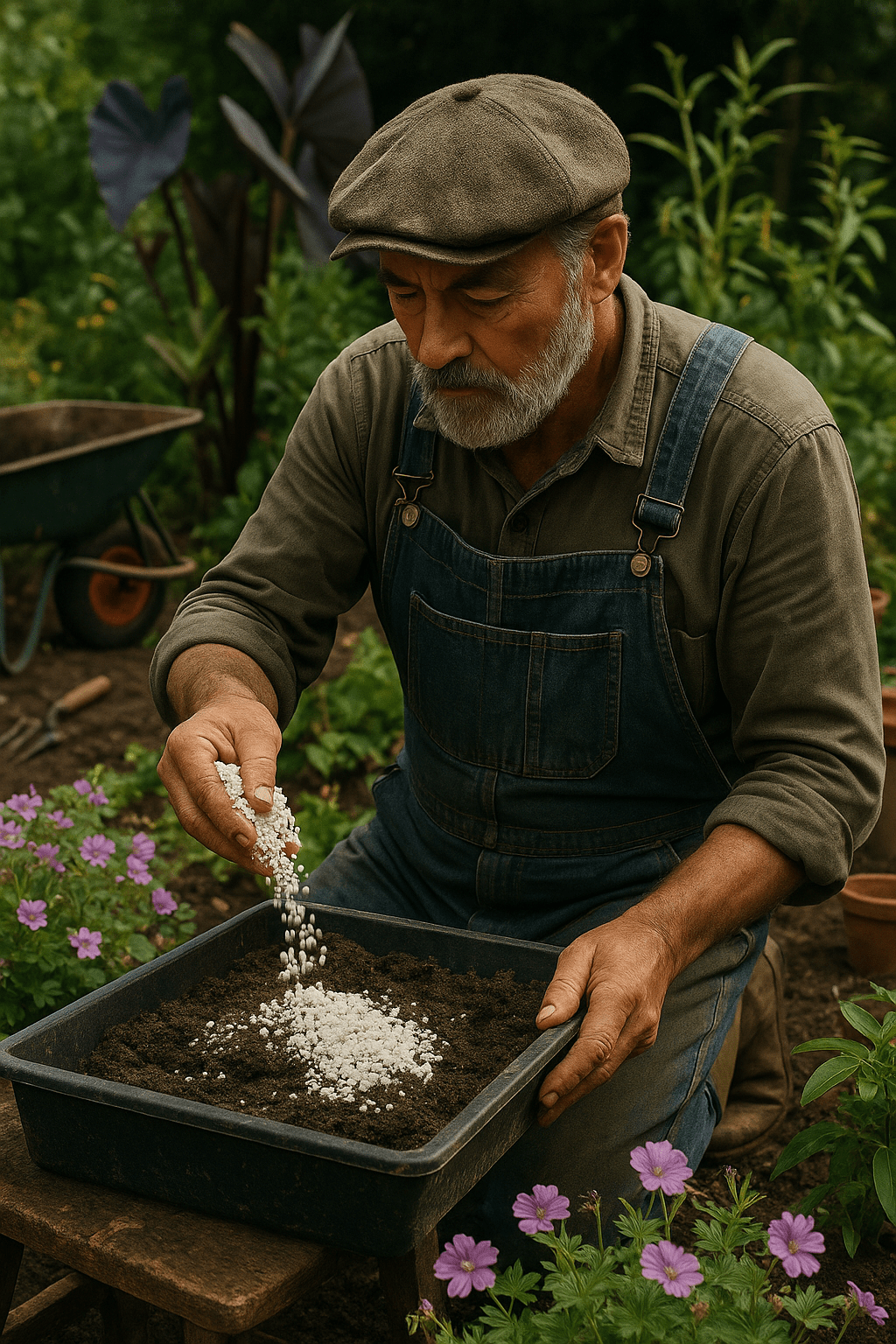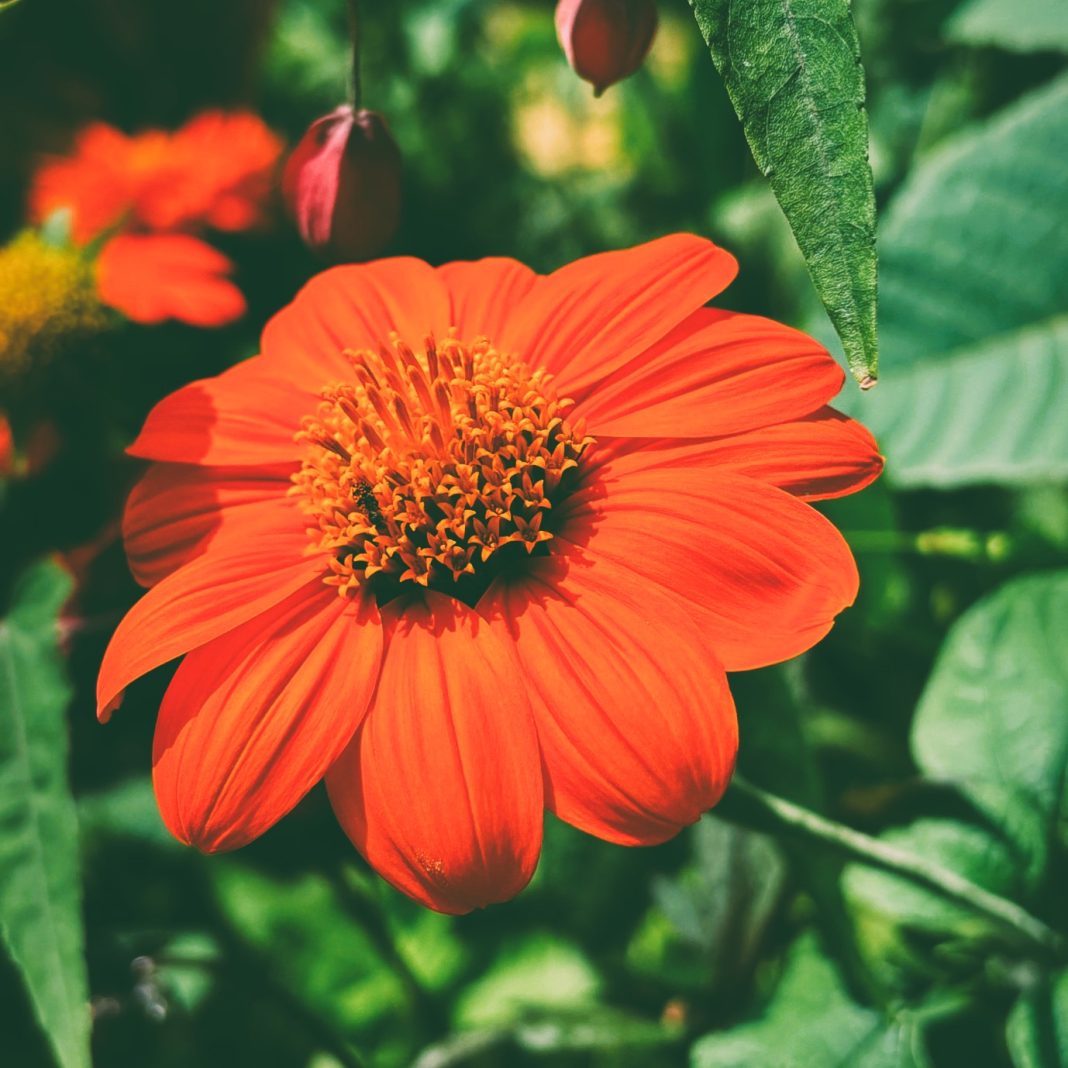Perlite is one of those unassuming materials that turns up in everything from houseplant compost to professional propagation trays. Those little white balls you see in potting mixes? That’s perlite—a volcanic mineral with a big role to play in modern gardening.
In this comprehensive guide, we’ll explore what perlite is, how it’s made, why it’s used, and—most importantly—how UK gardeners can use it effectively, including mix ratios, environmental considerations, and practical tips.
🔍 What Is Perlite?
Perlite is a naturally occurring form of volcanic glass. It’s mined from the earth and then heated in special kilns to around 850–900°C. When heated, the moisture trapped inside the rock vaporises, causing the rock to expand up to 20 times its original volume—just like popcorn.
The result is a white, lightweight, porous material that’s:
- Sterile
- Inert (chemically stable)
- pH neutral
- Extremely lightweight
- Excellent at holding air and water in balance
This makes it a perfect soil amendment, especially for potted plants and greenhouse growing.
🌱 Why Gardeners Use Perlite
✅ Improves Soil Aeration
Perlite introduces air pockets into compost or soil, allowing roots to breathe. This is especially helpful in compacted or moisture-retentive soils.
✅ Enhances Drainage
It prevents water from sitting in the root zone for too long—ideal for plants susceptible to root rot, and perfect for container gardening in the wet UK climate.
✅ Supports Water Retention
Despite its excellent drainage, perlite holds a small amount of water on its surface, ensuring roots don’t dry out too quickly.
✅ Disease-Free and Pest-Free
As a heat-treated mineral, perlite is naturally sterile. It doesn’t harbour fungi, bacteria, or insects—ideal for seed sowing and propagation.
✅ Lightweight
Much lighter than sand or grit, it’s excellent for hanging baskets, indoor plants, and anything that needs to be moved around.
⚖️ Perlite vs Vermiculite
Although often used together or interchangeably, perlite and vermiculite serve slightly different functions:
| Feature | Perlite | Vermiculite |
|---|---|---|
| Texture | Gritty and porous | Soft, spongy flakes |
| Water retention | Moderate | High |
| Drainage | Excellent | Moderate |
| Best for | Succulents, cacti, drainage-heavy soils | Seed sowing, moisture-loving plants |
🇬🇧 How to Use Perlite in UK Gardens
Here’s how UK growers can make the most of perlite, with clear mix ratios and practical advice:
1. Seed Sowing and Germination
Use ratio:
- 50% perlite + 50% seed compost, or
- 100% perlite for cuttings (with bottom watering)
Why:
Prevents damping-off and promotes fast root growth, especially helpful in cold, damp spring conditions.
2. Potting and Repotting Houseplants
Use ratio:
- 1 part perlite to 2–3 parts compost (25–33% perlite)
Why:
Improves root health and prevents compost from becoming waterlogged or compacted in pots and containers.
3. Cacti and Succulents
Use ratio:
- 1:1 mix with loam-based compost (e.g. John Innes No.2 or No.3), plus a little horticultural grit if desired
Why:
Ensures fast drainage—essential in our humid or damp climate, especially over winter.
4. Soil Conditioning in Beds and Borders
Use ratio:
- 10–20% perlite mixed into the top 15–20cm of heavy or clay soil
(Typically one bucket per square metre)
Why:
Improves structure and drainage in heavy, sticky soils—common in many UK gardens.
5. Hydroponics and Soilless Systems
Use ratio:
- 100% perlite or 50:50 with coco coir or vermiculite
Why:
Perlite’s capillary action makes it ideal for hydroponic growing and sterile propagation.
🌍 Is Perlite Environmentally Friendly?
Perlite is not renewable, as it’s a mined volcanic material. However, it’s abundant in supply and mining is generally considered low impact compared to peat extraction or intensive farming of organics.
✅ Environmental Benefits:
- Reusability: Unlike organic materials that degrade, perlite doesn’t break down—so it can be sterilised and reused multiple times, reducing waste.
- No chemical inputs: Perlite is inert and doesn’t need pesticides or fertilisers to be produced.
- Peat-free support: Used in peat-free composts as a structural substitute to improve aeration and drainage.
⚠️ Environmental Considerations:
- Energy intensive: The heating process to expand perlite consumes significant energy, but the lightweight end product offsets carbon costs in transport.
- Packaging: Often sold in plastic bags—look for bulk or professional suppliers offering eco-packaging if possible.
While not perfect, perlite is a responsible choice when used thoughtfully—especially in support of peat-free gardening and reducing plant losses due to poor drainage or disease.
💡 UK-Specific Tips
- Dampen before use: Perlite is dusty when dry. Lightly mist it before mixing to avoid inhaling dust (wear a mask if needed).
- Reusability: Can be sterilised and reused by soaking in boiling water or baking in the oven (180°C for 30 mins).
- pH neutral: It won’t alter your soil chemistry—safe to use in ericaceous compost for acid-loving plants.
🛒 Where to Buy Perlite in the UK
Available in most garden centres, B&Q, Wickes, and online from:
- Westland
- Levington
- Vitax
- Melcourt (professional-grade horticulture)
Sold in small bags (5–10L) for houseplants or large sacks (50–100L) for allotments and landscaping.
📌 Summary: Why Perlite Deserves a Place in Every Garden
| Task | Perlite Use |
|---|---|
| Seed sowing | Lighten compost, improve air/moisture |
| Potting mixes | Improve structure and root health |
| Cacti/succulents | Essential for drainage |
| Clay soil improvement | Breaks up compaction, aids root spread |
| Cuttings and propagation | Root-friendly, sterile environment |
| Hydroponics and grow rooms | Lightweight, disease-free medium |
Whether you’re raising seedlings on a windowsill, growing tomatoes in a greenhouse, or trying to improve your heavy clay soil, perlite offers a simple, effective solution. Lightweight, reusable, and highly effective—it’s a material that every UK gardener should keep on hand.





